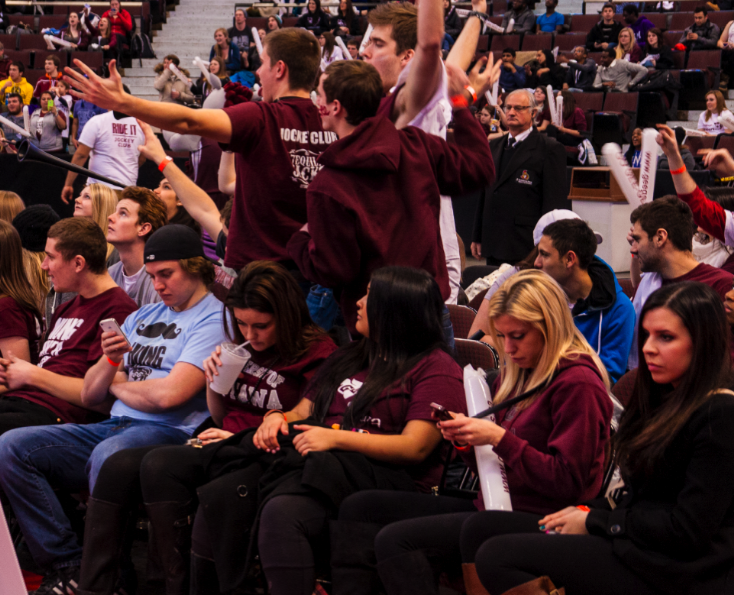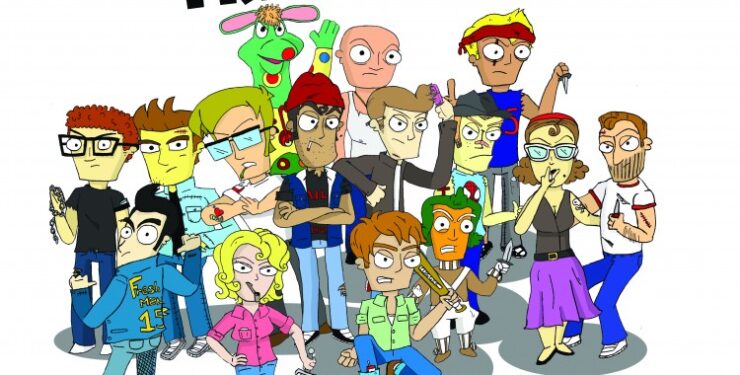Maclaine Chadwick | Sports Editor
Photo by Mico Mazza
6,280 BASKETBALL FANS showed up at Scotiabank Place for the 2013 Capital Hoops Classic. That number may seem high when you compare it to an average Gee-Gees game on campus, but compared to Capital Hoops of years past, it’s way less than ideal.
If you recognize the phrase “Hung like a Gee-Gee,” then you are probably familiar with the Jockey Club—a student organization that dedicate themselves to “JACK DANIELS, KEGS, PARTYING HARD AND CHEERING ON OUR GEEGEES TO VICTORY RAIN OR SHINE” (taken from the club’s Facebook page; caps lock included).
Awesome—except for one thing: the Jockey Club has shown up at only a few Gee-Gees events this year.
Many moons ago, when I was in first year, it was common at almost every game to see a group of students dressed as the stereotypical die-hard sports fan—body paint, temporary tattoos, some sort of ridiculous headwear, and a beer in hand. They were loud and proud, and their presence guaranteed that the in-game atmosphere would be lively and a little bit rowdy—exactly what you would expect from a university sports game.
Lately, the group has been absent from stands. Even though they can sometimes be a bit obnoxious and annoying, they made the game experience more entertaining with their cheering, chanting, and facepaint.
The U of O Jockey Club is only one example of a spirit group that is seemingly shrinking, though. Many schools—including some National Collegiate Athletics Association (NCAA) teams that can draw tens of thousands of fans to games—have seen a decline in student participation over recent years.
Mark Hollis, director of athletics at Michigan State University, suggests that young people’s attachment to their phones may be one reason for the decline in attendance at sports games.
“That age group is going to be—I don’t want to call it a threat—but a high concern,” Hollis said to CBS Sports. “They’re watching it on TV, or they’re tweeting about it. We’ve got to find a way to connect.”
Well, shit. Colour me guilty for being a small player in perpetuating this problem. I have live-blogged and live-tweeted games in the past. I get my NHL updates from a Sportsnet app, and these days I would rather get a retweet from the U of O Gee-Gee mascot than a hug—no offence, Gee-Gee.
I love social media, but I don’t love what it’s done to the sports that are accessible to us. Even though my chances of ever making it to a Super Bowl are slim to none (unless this whole journalism thing really takes off), I will still watch it on TV and tweet my heart out. As for Gee-Gees games—which take place on a regular basis, on our campus, free of charge (read: accessible)—well, if I wasn’t writing from an unbiased corner of the stands, I would revert back to my first-year days and come decked to the nines in garnet and grey. Truth is, there’s no better way to experience sports than being there and totally immersing yourself in the game with a group of like-minded buddies. Social media is a wonderful way to complement these experiences—or ride on their coattails, if you can’t make it to see your favourite pro team—but don’t let it stop you from being actually being present in the stands.




